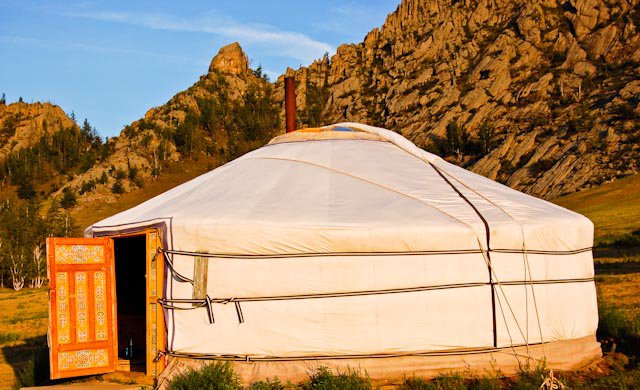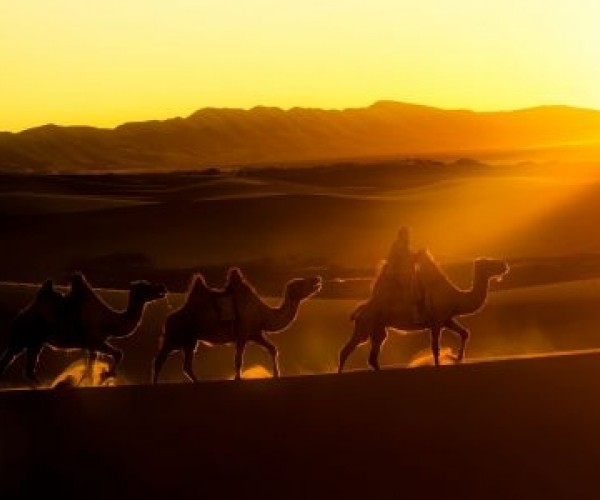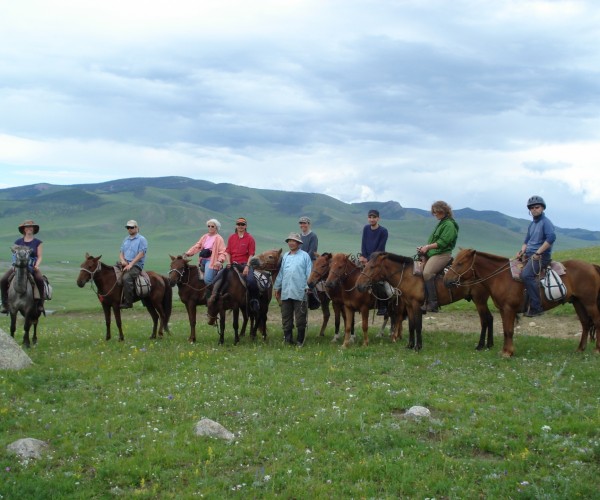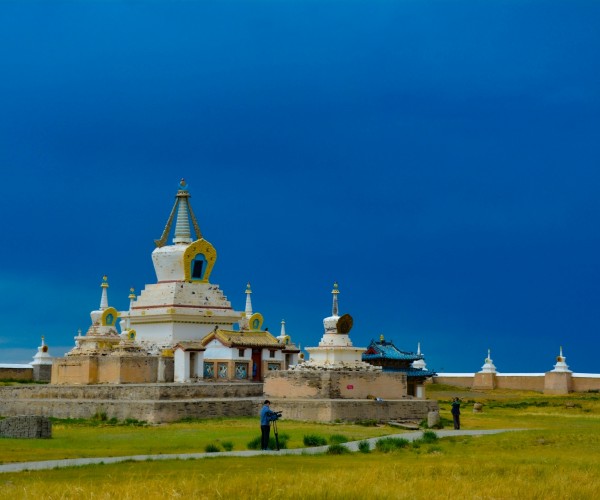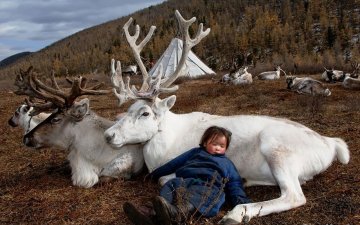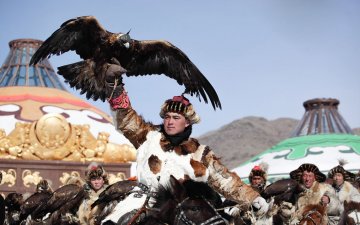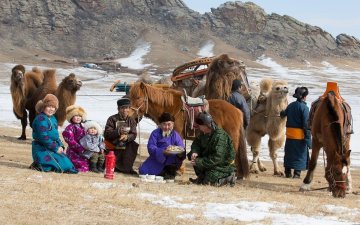The Mongolian Ger is ideally suited for the country's extreme climate and the people's nomadic way of life. It is a multipurpose dwelling that can be easily dismantled and transported to another place and put up again fully preserving its original shape. Being constantly on the move with herds of animals or being on military campaigns, compelled Mongols to build Gers on carts. Old books contain pictures of such Gers, temporary abodes in which families of three or four could spend the night or find shelter. After some time the use of carts stopped because they were clumsy and the Gers could not be hauled over long distances as there was the danger of getting stuck in the mud somewhere or falling over.
The Ger has two key components - the wooden framework and the felt cover. The wooden parts are the walls, the long poles, the round smoke escape, and its supports. One wall consists of 10-15 wooden poles, each about 1.5 m high, bound together in a way that makes it possible to fold it for transportation and then unfold like an accordion. The unfolded walls are connected to form a circle. The long poles are fastened to the upper part of the walls, with the other end passing through the round support at the top of the Ger, making this the only window where smoke can escape the Ger. Two posts prop up the round support. All this forms wooden framework of the Ger, which resembles an open umbrella. Two layers of felt are then laid on the roof and walls which are tied down with hair rope. The top of the Ger has a felt flap that can be drawn over the roof when the weather is bad. Inside the Ger, felt is laid either on a wooden floor or directly on the ground. The door of the Ger always faces south towards the sun. The number of walls and poles determines the size of the Ger. Most herder’s Gers have components of walls, which make a living area of 16-18 sq. meters. Larger Gers have up to 12 components walls. In the centre of the Ger is a fire place that has a special meaning for the Mongols. Apart from its utilitarian purpose, the hearth symbolizes ties with ancestors. There are several customs associated with the the hearth. The fireplace is mounted on three stones, which symbolize the host, the hostess, and the daughter-in-law. It is the centre of the Ger and divides the Ger space into three conventional areas-the male and female quarters and the side space. Desecration of the fire place is a sin and an insult to the master of the house. The male quarters are on the western side. Here, the host keeps the saddle, the horse bridle, and the koumiss /airag/ bag. The female quarters are on the eastern side, where she keeps the kitchenware and appliances. Accordingly, a man entering the Ger goes straight to the western part and a woman to eastern part. It is believed that male quarters are under the protection of heaven and the female quarters are protected by the sun. The most honored place is the khoimor- the side space by the northern wall, opposite the door. Here they keep objects dear to the master of the house; weapons, Morin khuur /Horse headed fiddle/ and horse bridle. Pieces of furniture, usually two bright orange wooden chests, are also placed in the khoimor-side space. Framed photographs of the host’s family friends are put on the chests for everyone to see. If the host has some governmental and military awards, he is sure to hang it in the khoimor/ side space.
When guest visit, the host usually sit on the eastern side of the khoimor and quests on the western side.
There are many philosophical ideas about the Ger, its parts, and its functions. The smoke escape is the only opening that allows light to enter. An old legend says that it was trough such a hole that a fair-haired man got into the ger of Alangua, the Mongols ancestral mother, and begot three sons. In olden days, people could tell the time by the sun’s rays falling on the cross pieces of the smoke escape and on the poles. The Mongols divided the day into twelve hours and each hour twelve minutes, which they called by the names of the lunar calendar animals. A hair rope, chagtaga, is fastened to the smoke escape with a weight attached to the other end to stabilize the ger during strong wind. In new Gers , They fasten a khadag to it, piece of blue silk in which a handful of grain is wrapped. The khadag means “May happiness grow in this new ger like grains of corn, and may their life be pure and beautiful here.”





